-
 Bitcoin
Bitcoin $94,712.0301
0.86% -
 Ethereum
Ethereum $1,813.7037
1.28% -
 Tether USDt
Tether USDt $1.0001
0.01% -
 XRP
XRP $2.1339
-0.47% -
 BNB
BNB $598.9302
2.30% -
 Solana
Solana $145.7434
1.63% -
 USDC
USDC $1.0001
0.02% -
 Dogecoin
Dogecoin $0.1705
0.73% -
 TRON
TRON $0.2480
0.50% -
 Cardano
Cardano $0.6629
-1.09% -
 Sui
Sui $3.3794
4.80% -
 Chainlink
Chainlink $13.6249
-1.50% -
 Avalanche
Avalanche $19.7152
-0.15% -
 Stellar
Stellar $0.2591
-2.06% -
 UNUS SED LEO
UNUS SED LEO $8.6571
-4.66% -
 Shiba Inu
Shiba Inu $0.0...01267
0.63% -
 Toncoin
Toncoin $2.9811
-0.46% -
 Hedera
Hedera $0.1735
-0.82% -
 Bitcoin Cash
Bitcoin Cash $354.3469
0.55% -
 Hyperliquid
Hyperliquid $20.4287
2.57% -
 Litecoin
Litecoin $82.9746
-2.34% -
 Polkadot
Polkadot $3.9183
-0.25% -
 Dai
Dai $1.0000
0.00% -
 Monero
Monero $277.3512
1.61% -
 Bitget Token
Bitget Token $4.3107
0.23% -
 Ethena USDe
Ethena USDe $1.0004
-0.01% -
 Pi
Pi $0.5877
-0.57% -
 Pepe
Pepe $0.0...07940
-1.91% -
 Bittensor
Bittensor $373.8887
9.56% -
 Uniswap
Uniswap $4.9552
-0.52%
Digital currency wallet address query
A digital currency wallet address is a unique string of characters used for sending and receiving cryptocurrencies like Bitcoin or Ethereum, accessible through wallet software or blockchain explorers.
Jan 12, 2025 at 08:44 pm
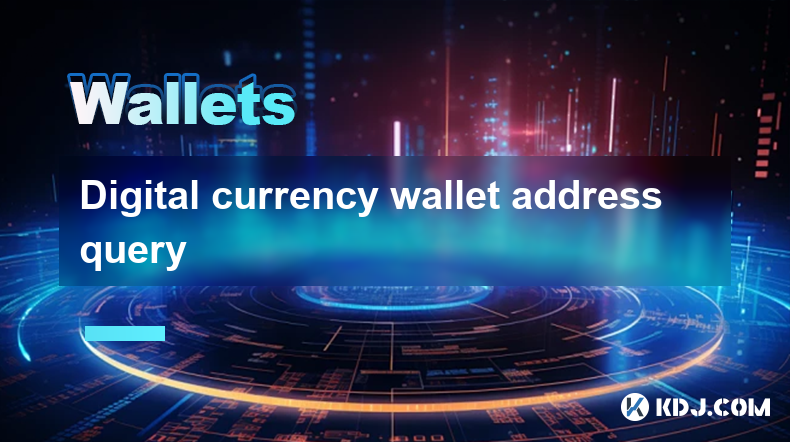
Key Points:
- What is a digital currency wallet address?
- How to find a digital currency wallet address?
- How to use a digital currency wallet address?
- What are the security risks associated with digital currency wallet addresses?
- How to protect your digital currency wallet address?
What is a digital currency wallet address?
A digital currency wallet address is a unique string of characters that represents a specific account on the blockchain. It is used to send and receive digital currency. Each wallet address is associated with a specific cryptocurrency, such as Bitcoin, Ethereum, or Litecoin.
How to find a digital currency wallet address?
You can find your digital currency wallet address by logging into your wallet software or by using a blockchain explorer.
- Wallet software: Most digital currency wallets will show you your wallet address on the main screen.
- Blockchain explorer: You can also find your wallet address by using a blockchain explorer. A blockchain explorer is a website that allows you to view the transactions on a specific blockchain. To find your wallet address using a blockchain explorer, you will need to enter your public key.
How to use a digital currency wallet address?
To send digital currency, you will need to provide the recipient's wallet address. To receive digital currency, you will need to provide your own wallet address.
What are the security risks associated with digital currency wallet addresses?
Digital currency wallet addresses are vulnerable to a number of security risks, including:
- Phishing: Phishing is a type of cyber attack in which a scammer sends you an email or text message that looks like it comes from a legitimate source, such as a bank or a cryptocurrency exchange. The email or text message will contain a link to a fake website that looks like the real thing. If you click on the link and enter your wallet address, the scammer will be able to steal your funds.
- Malware: Malware is a type of software that can infect your computer or mobile device. Malware can steal your wallet address and other sensitive information.
- Keyloggers: Keyloggers are a type of malware that can record your keystrokes. This can allow a scammer to steal your wallet address if you enter it into a website or a software application.
How to protect your digital currency wallet address?
You can protect your digital currency wallet address by following these steps:
- Use a strong password: Use a strong password for your wallet software and for any blockchain explorers that you use. A strong password is at least 12 characters long and contains a mix of upper and lower case letters, numbers, and symbols.
- Enable two-factor authentication: Two-factor authentication (2FA) is a security measure that requires you to provide two pieces of information when you log into your wallet software. This makes it more difficult for scammers to access your account, even if they have your password.
- Be careful about who you share your wallet address with: Only share your wallet address with people you trust. Do not share your wallet address on social media or on public websites.
- Keep your wallet software up to date: Wallet software updates often include security fixes. It is important to keep your wallet software up to date to protect your funds.
- Use a hardware wallet: A hardware wallet is a physical device that stores your digital currency keys. Hardware wallets are more secure than software wallets because they are not connected to the internet.
FAQs
- What is the difference between a public key and a private key?
A public key is a string of characters that you can share with others. A private key is a string of characters that you should keep secret. Your public key is used to encrypt transactions. Your private key is used to decrypt transactions.
- How do I create a digital currency wallet?
You can create a digital currency wallet by signing up for a wallet service. There are many different wallet services available, including online wallets, mobile wallets, and hardware wallets.
- What is a blockchain explorer?
A blockchain explorer is a website that allows you to view the transactions on a specific blockchain. You can use a blockchain explorer to find your wallet address, view your transaction history, and track the status of your transactions.
- What is the best way to store my digital currency?
The best way to store your digital currency is to use a hardware wallet. Hardware wallets are more secure than software wallets because they are not connected to the internet.
- What should I do if I lose my digital currency wallet?
If you lose your digital currency wallet, you will need to create a new one. You will not be able to recover your funds if you lose your wallet.
Disclaimer:info@kdj.com
The information provided is not trading advice. kdj.com does not assume any responsibility for any investments made based on the information provided in this article. Cryptocurrencies are highly volatile and it is highly recommended that you invest with caution after thorough research!
If you believe that the content used on this website infringes your copyright, please contact us immediately (info@kdj.com) and we will delete it promptly.
- Meme Coins Face Resistance This May After April Surges
- 2025-05-06 09:15:12
- Cedar DAO Launches on Solana, Bringing Triple Rewards to Its Holders
- 2025-05-06 09:15:12
- Pepeto faces Pepe in the meme war, can either make x100, best time to buy Pepe now?
- 2025-05-06 09:10:11
- Pepeto: The Next Chapter in Frog-Themed Crypto Evolution
- 2025-05-06 09:10:11
- The PI Coin price has struggled to gain momentum amid plummeting trading volumes and skepticism over unconfirmed partnership claims.
- 2025-05-06 09:06:22
- Indonesia Temporarily Suspends Operations of Worldcoin, a Digital Identity Project
- 2025-05-06 09:06:22
Related knowledge
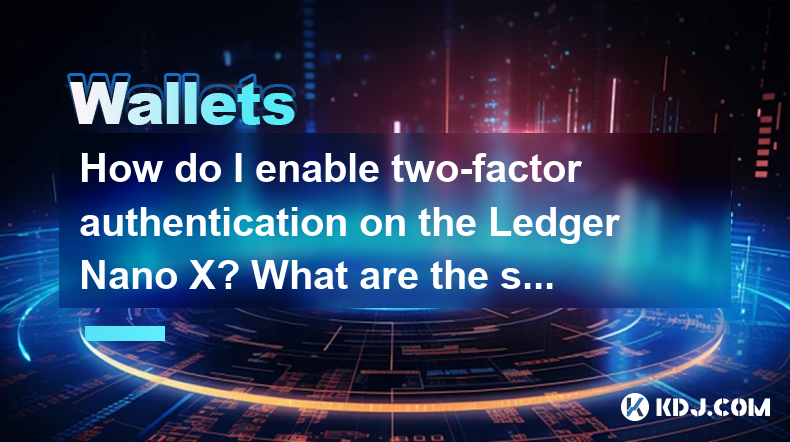
How do I enable two-factor authentication on the Ledger Nano X? What are the security options?
May 02,2025 at 09:49pm
Enabling two-factor authentication (2FA) on your Ledger Nano X is a critical step in securing your cryptocurrency assets. The Ledger Nano X offers robust security options that enhance the protection of your digital wealth. In this article, we will guide you through the process of enabling 2FA on your Ledger Nano X and explore the various security featur...
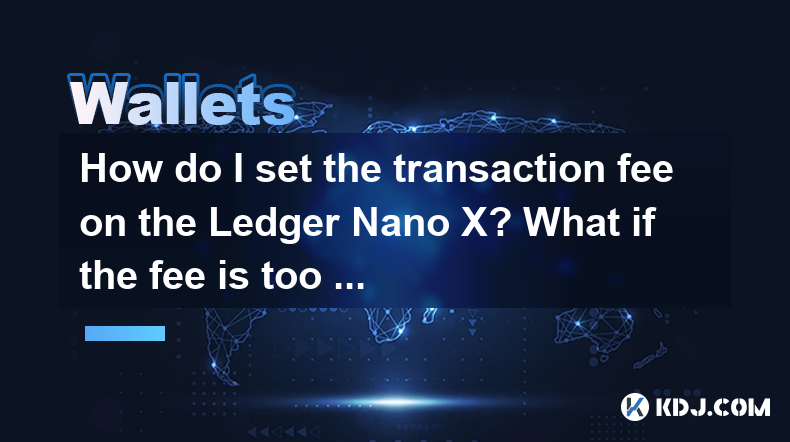
How do I set the transaction fee on the Ledger Nano X? What if the fee is too high?
May 05,2025 at 09:21pm
Setting the transaction fee on your Ledger Nano X is an essential part of managing your cryptocurrency transactions efficiently. The transaction fee directly impacts how quickly your transaction is processed and confirmed on the blockchain. In this guide, we will walk you through the steps to set the transaction fee on your Ledger Nano X, and what to do...
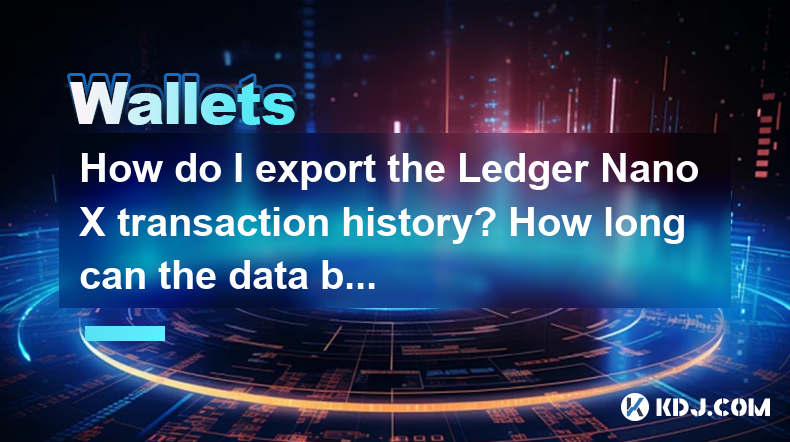
How do I export the Ledger Nano X transaction history? How long can the data be saved?
May 04,2025 at 07:21am
Introduction to Ledger Nano X and Transaction HistoryThe Ledger Nano X is a hardware wallet designed to store your cryptocurrency safely. It supports a wide range of cryptocurrencies and offers robust security features. One of the essential aspects of managing your cryptocurrencies is keeping track of your transaction history. The Ledger Nano X allows y...
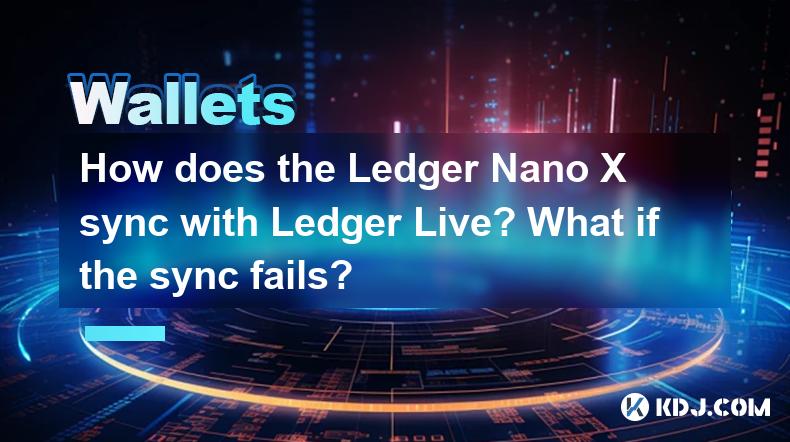
How does the Ledger Nano X sync with Ledger Live? What if the sync fails?
May 04,2025 at 12:07pm
The Ledger Nano X is a popular hardware wallet that allows users to securely manage their cryptocurrency assets. One of the key features of the Ledger Nano X is its ability to sync with the Ledger Live application, which provides a user-friendly interface for managing your crypto portfolio. In this article, we will explore how the Ledger Nano X syncs wi...
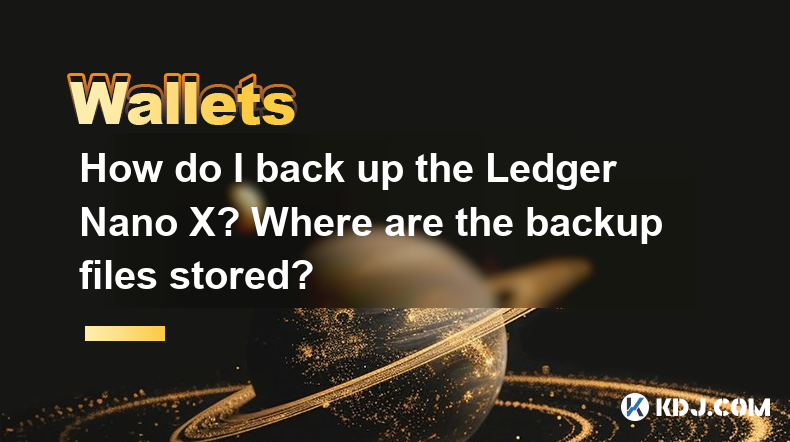
How do I back up the Ledger Nano X? Where are the backup files stored?
May 06,2025 at 09:07am
Introduction to Backing Up Your Ledger Nano XBacking up your Ledger Nano X is crucial for safeguarding your cryptocurrencies. A backup ensures that you can recover your funds if your device is lost, stolen, or damaged. In this article, we will delve into the step-by-step process of backing up your Ledger Nano X, as well as where the backup files are sto...
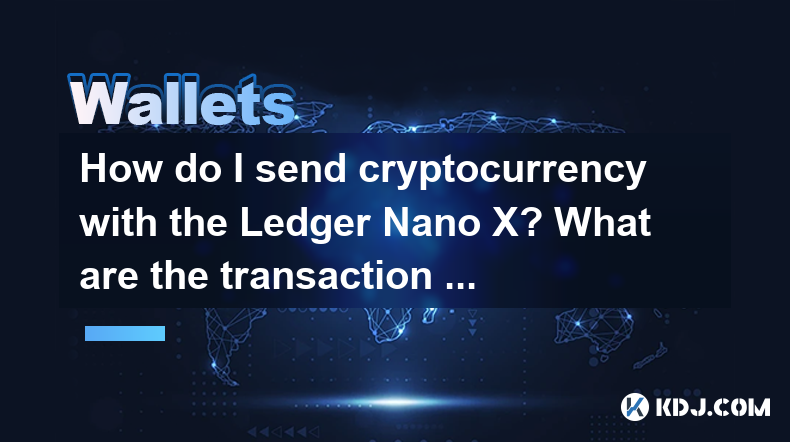
How do I send cryptocurrency with the Ledger Nano X? What are the transaction confirmation steps?
May 03,2025 at 05:01am
Sending cryptocurrency using the Ledger Nano X involves a series of steps that ensure the security and accuracy of your transactions. This process is designed to be user-friendly while maintaining the high level of security that Ledger devices are known for. In this article, we will guide you through the process of sending cryptocurrency with the Ledger...

How do I enable two-factor authentication on the Ledger Nano X? What are the security options?
May 02,2025 at 09:49pm
Enabling two-factor authentication (2FA) on your Ledger Nano X is a critical step in securing your cryptocurrency assets. The Ledger Nano X offers robust security options that enhance the protection of your digital wealth. In this article, we will guide you through the process of enabling 2FA on your Ledger Nano X and explore the various security featur...

How do I set the transaction fee on the Ledger Nano X? What if the fee is too high?
May 05,2025 at 09:21pm
Setting the transaction fee on your Ledger Nano X is an essential part of managing your cryptocurrency transactions efficiently. The transaction fee directly impacts how quickly your transaction is processed and confirmed on the blockchain. In this guide, we will walk you through the steps to set the transaction fee on your Ledger Nano X, and what to do...

How do I export the Ledger Nano X transaction history? How long can the data be saved?
May 04,2025 at 07:21am
Introduction to Ledger Nano X and Transaction HistoryThe Ledger Nano X is a hardware wallet designed to store your cryptocurrency safely. It supports a wide range of cryptocurrencies and offers robust security features. One of the essential aspects of managing your cryptocurrencies is keeping track of your transaction history. The Ledger Nano X allows y...

How does the Ledger Nano X sync with Ledger Live? What if the sync fails?
May 04,2025 at 12:07pm
The Ledger Nano X is a popular hardware wallet that allows users to securely manage their cryptocurrency assets. One of the key features of the Ledger Nano X is its ability to sync with the Ledger Live application, which provides a user-friendly interface for managing your crypto portfolio. In this article, we will explore how the Ledger Nano X syncs wi...

How do I back up the Ledger Nano X? Where are the backup files stored?
May 06,2025 at 09:07am
Introduction to Backing Up Your Ledger Nano XBacking up your Ledger Nano X is crucial for safeguarding your cryptocurrencies. A backup ensures that you can recover your funds if your device is lost, stolen, or damaged. In this article, we will delve into the step-by-step process of backing up your Ledger Nano X, as well as where the backup files are sto...

How do I send cryptocurrency with the Ledger Nano X? What are the transaction confirmation steps?
May 03,2025 at 05:01am
Sending cryptocurrency using the Ledger Nano X involves a series of steps that ensure the security and accuracy of your transactions. This process is designed to be user-friendly while maintaining the high level of security that Ledger devices are known for. In this article, we will guide you through the process of sending cryptocurrency with the Ledger...
See all articles




















































































